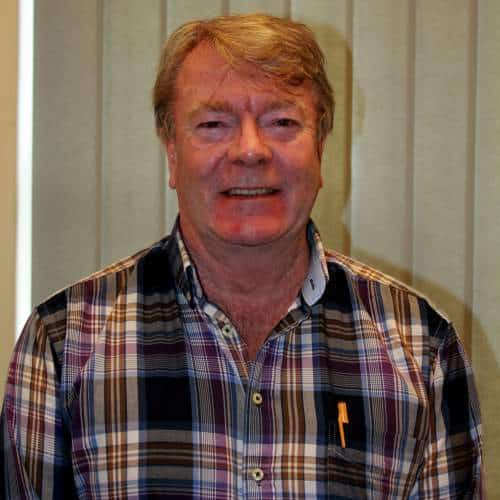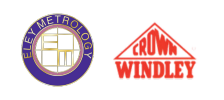We’ve already passed Back to the Future’s imaginary 2015, meaning that every year from now on is technically sci-fi. Every quarter, engineers and innovators push the limits of design and bring new possibilities to labs, workshops, and consumers. Metrology underpins this design innovation, as the science of measurement lays the foundation for planning, manufacturing, and maintaining our creations. By assessing the current trends in engineering, and the new fields at the science’s cutting edge, we can begin predicting the future of metrology.
Emerging Trends in Metrology
Metrological developments empower engineers to do more with less. This multi-functionality manifests itself in the modern multi-sensor metrology device. Tools like these use a range of capabilities, from tactile probes to photographic analysis, even to X-ray and CT scanning. This supports robust checks which ensure our machines run at peak efficiency. This emerging trend hints at the next generation of measurement systems adding new sensors to their roster, going above and beyond the five senses of a human inspector.
Of course, another trend shaping the future of metrology is the rapid increase in digitisation and smart solutions. Many metrology devices can now communicate digitally with the machines they measure and report back to their engineers and business leaders. This heralds the universal digitisation of design, manufacture, and maintenance technology. Cloud-based metrology platforms will surely support the efficient labs and workshops of the Future.
Factors Affecting the Future of Metrology
The goal of efficiency drives businesses to maximise their value and meet their clients’ needs. Metrology supports this drive, and new technology will accelerate it in the Future, with precision measurement equipment calculating every step of the way.
Besides tighter margins of error, the future of metrology must also prioritise sustainability and green solutions. As the climate crisis influences consumption choices, policies, and weather patterns, private industries help lead the way in sustainable science. The drive to curb emissions, alongside the switch to new green materials as non-renewables start to dwindle, can only increase in the future of metrology.
Three Things Likely to Decrease in the Future of Metrology
Measurement Sizes
One way to use resources more efficiently also creates lightweight, ergonomic products: the rise of micro and nanotechnology. Huge industries, including medicine, telecommunications, and even construction, are already down-sizing their scopes. Innovation in engineering is generally product-led, and new possibilities in metrology will have to be precise to service micro and nanotechnologies.
Precision measurement equipment already has immense potential, but future requirements may force it to adapt to microscopic circuit components and innovative materials like graphene and aerogel. These new products may require tighter margins of error, enabled by powerful metrology equipment. In this way, metrology and invention evolve in parallel, in an arms race to meet the challenges of the Future.
Cost
The market demands reducing costs, welcoming any new metrological tools that can take us there. AI may continue to grow in the design and maintenance space. This saves cost by predicting part interactions and warning operators far in advance of any wear and tear. Greater efficiency and greater capabilities should lead to cheaper, more cost-effective workflows.
Barriers to Usage
While metrology tools become more complex and more powerful, they should become more intuitive and accessible for workers and business leaders alike. Refinements in user interface, and newfound portability, should ease these tools in their transition from laboratory to workshop floor.
Three Things Likely to Increase in the Future of Metrology
Speed
Design and maintenance have accelerated since the industrial revolution. As ever, the Future of metrology shows no sign of bucking the trend. The next generation of hardware brings speedier motors, quicker calibration, and faster scanning. However, software leads the charge. Intelligent metrological computing tools already process tens of thousands of data points in minutes flat. As updates roll out, smart metrology calculates nuanced variations in material properties at unthinkable speeds.
Accuracy
Increased processing and data throughput meet the cross-referencing potential of multi-sensor devices to fine-tune accuracy in the future of metrology. When precision measurement equipment assesses performance across multiple channels, and double-check in them double-time, they inevitably increase accuracy.
Integration
Cloud computing and digital metrology open up unlimited potential in design and maintenance. Digital measurement tools are far easier to operate and calibrate. Soon, however, these machines will be able to talk back and forth across whole production networks. This allows workflows to audit themselves, locating, isolating, and fixing faults, or predicting and avoiding them before they even occur. Fully digitised networks could automate their performance reports and work their insights into the gears of production.
Conclusions
While certain trends seem inevitable, most estimates about metrology are just that: estimates. However, when you equip yourself with the precision measurement equipment of the present, in partnership with pioneering professionals, you take the future of metrology into your own hands.

Jeff Eley is the founder and managing director of Eley Metrology, a leading company in the precision measurement industry. With decades of experience in metrology, Jeff has established himself as a respected figure in the field. Under his leadership, Eley Metrology has become renowned for its expertise in coordinate measuring machines (CMMs), digital height gauges, and granite metrology products. Jeff’s vision has driven the company to develop innovative solutions, including custom-designed CMMs and the flagship long-bore measurement machine (LBM). His commitment to excellence and customer-centric approach has positioned Eley Metrology as a trusted provider of high-precision measurement tools and services for industries such as aerospace, automotive, and manufacturing.


